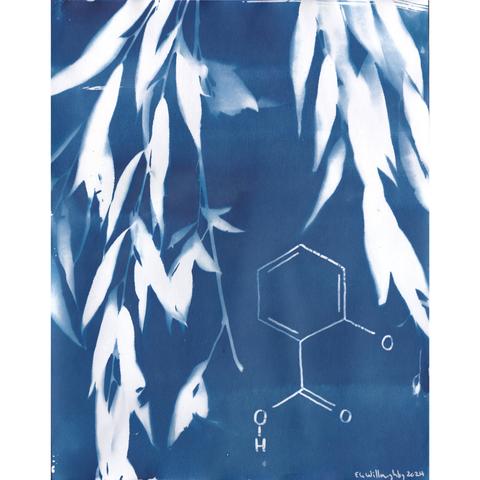The #SciArtSeptember prompt is weeping so here is my weeping willow and salicylate cyanotype!
Willow has been used used for medicinal purposes for 1000s of years; cures using willow appear in the writings of various ancient Greek scholars & infusions of willow bark were used traditionally by Cherokee & other Indigenous peoples of NA for fever & other medicinal purposes.
🧵1/n
#sciart #printmaking #chemistry #salix #weepingWillow #willow #histsci #MastoArt
